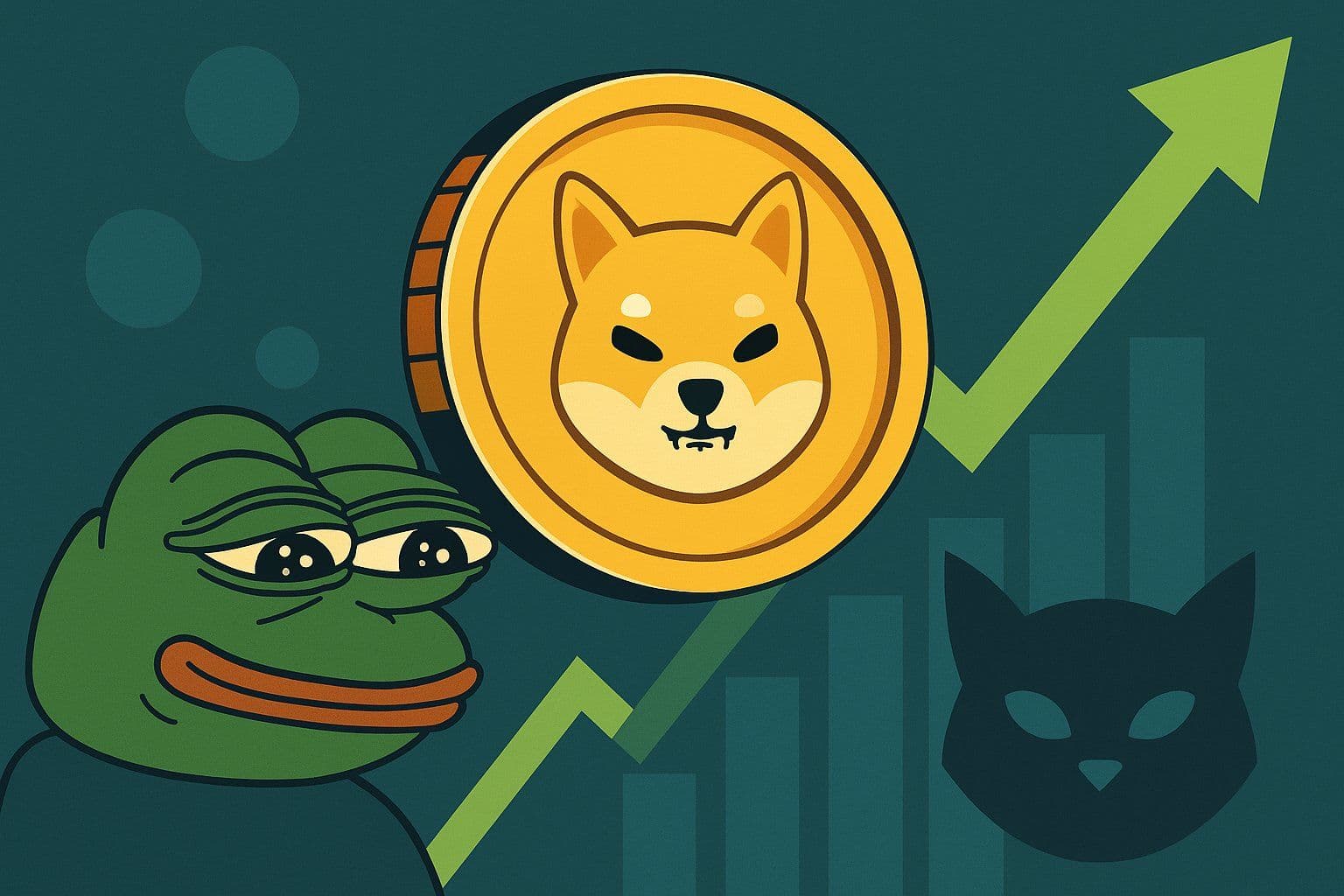The meme coin market is entering a new evolutionary phase. What began as pure internet humor powered by Dogecoin and Shiba Inu has now shifted into something more structured. A growing number of meme tokens are integrating real mechanics such as staking access, community governance perks and early entry to new layer-2 networks. The result is a meme economy that still thrives on culture and virality but is becoming progressively more complex and strategic.
Market activity confirms the shift. Meme tokens still retain billions in total market value, yet the nature of winners is changing. Dog-themed coins remain popular, but trader attention has expanded into frog coins, AI meme tokens and culturally native micro-communities that move faster and decay slower than traditional hype plays. The entry barrier to attention has shifted from loud branding to narrative precision.
Meme-Economy 2.0: Culture plus Mechanism
In the previous cycle, meme coins were often powered by nothing more than a logo, a joke and a viral moment. Today, many emerging meme projects are deliberately combining culture with function. Some offer low-fee swaps or snapshot-based access to launchpads. Others introduce chain-specific perks or staking incentives that extend beyond simple speculation.
This does not make meme coins safe. It makes them more layered. The intent is not to abandon volatility but to weaponize it in more intelligent ways.
Why the Return Is Happening Now
Several forces are converging to bring back meme coin activity at scale:
- Cultural rotation: Traders are finally moving beyond recycled dog references and embracing fresher identities such as frogs, post-ironic internet humor and hyper-localized microcultures.
- Low transaction costs return: Activity on low-fee chains and layer-2 networks allows for high-frequency meme speculation again without users being penalized by gas.
- Social media algorithms favor speed content: TikTok, X and Telegram groups amplify meme-style narratives faster than fundamentals-driven news, pushing communities to chase attention instead of analysis.
- Utility as narrative amplifier: Projects with even minimal functional incentive retain attention longer than meme-only coins with no structure behind their brand.
Still Extremely High Risk
It is important to be clear: this new wave is not safer. It is simply more advanced. Meme markets remain dominated by emotion, speed and exit behavior by short-term participants. Most tokens will still disappear as soon as the narrative decays.
However, the indicators for identifying stronger candidates are now clearer than before. There is a visible difference between three-day fads and tokens designed to survive beyond their initial hype window.
What to Watch for in a Potential Outperformer
Signs that a meme token could sustain beyond the first spike include:
- Sustained social participation, not just mentions: Repeated re-memes, community-made spin-offs and creator-level content, not just one spike of attention.
- Actual utility hook: Staking access, future airdrop eligibility, launchpad participation or ecosystem role beyond speculation.
- Fresh positioning on newer or underexposed infrastructure: Meme tokens on emerging chains or fresh layer-2s often gain faster narrative momentum before institutional liquidity arrives.
- Narrative clarity: Strong memes communicate the entire story in one glance. If the identity needs explaining, it has already lost speed.
The Bigger Shift
Meme coins are no longer a fringe sideshow. They have become cultural liquidity engines. Their speed shapes attention cycles. Their virality stress-tests network throughput and token distribution models. In many ways they function as rapid-fire market laboratories, where adoption mechanics, wallet distribution behaviour and social incentive design are tested in real time.
The difference now is that the most competitive meme tokens are no longer just jokes. They are becoming narrative-driven infrastructure previews. They are still chaotic, but the chaos is more strategic and more signal-rich for those watching closely.
Meme-Economy 2.0 is not safer, but it is smarter. And for the first time it feels like more than a gimmick. It feels like a front-running indicator for where culture and infrastructure may be heading next.


Comments